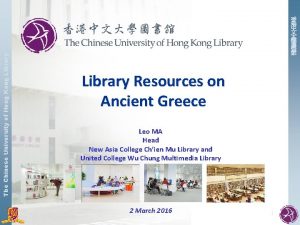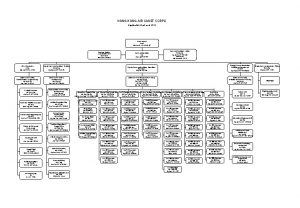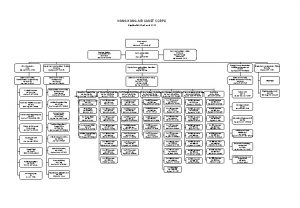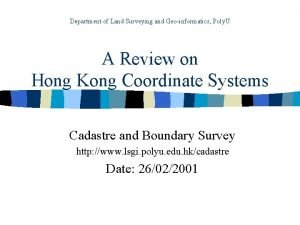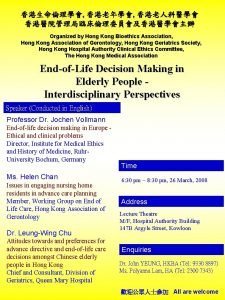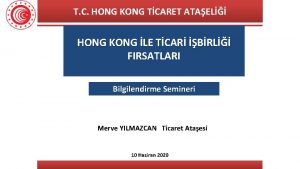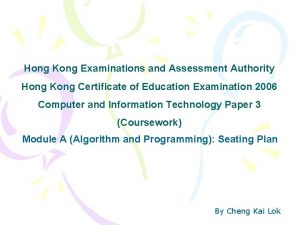Learning with smartphones a Hong Kong experience INFuture















- Slides: 15

Learning with smartphones: a Hong Kong experience INFuture 2015 Zvjezdana Dukic The University of Hong Kong dana. dukic@gmail. com

Smartphone penetration 2014 Hong Kong MTR Singapore South Korea Sweden Hong Kong Spain China Denmark UK Norway Taiwan Australia Netherlands Ireland Israel Switzerland New Zealand Finland USA Canada Source: Google's Consumer Barometer 85% 80% 75% 74% 72% 70% 69% 68% 67% 66% 65% 62% 60% 58% 57% 57% 2

Smartphone use What? Where? Source: data from Morgan Stanley, Google Think and Opera 3

Research questions This study intends to answer the following research questions: • To what extent LIS students use smartphones for academic leaning? • What typical learning related activities do LIS students perform with smartphones? • What are possible barriers to LIS students’ smartphones use for learning? 4

Research method • Research method: online survey • Research technique: questionnaire – 17 questions: 15 closed-ended and 2 open-ended – 3 parts: demographic data, smartphone use for daily needs, smartphone use for learning purposes • Sample: 93 LIS bachelor and master students – University of Hong Kong 5

Sample demographic characteristics Age Gender Male 20 - 30 35% Female 65% 54% 31 - 40 41 - 50 43% 3% Study level Bachelor degree. . . Master degree. . . 42% 58% 6

Smartphone use for daily needs Communicate with email, SMS, chat, etc. 95% 89% Use search engines Use social media (e. g. Facebook, Twitter) 83% Games, music, movies, TV series, etc 82% Use productivity tools (calendar, notes etc. ) 75% Casual reading 75% Find locations (streets, restaurants etc. ) 59% Accessing reference sources (e. g. encyclopedi. . . Hobbies, sports, fitness, travel Academic reading: articles, e-books, websites. . . 52% 46% 40% Popular activities: talking, sending email, texting, chatting, connecting with social media, using search engines and productivity tools, casual reading 7

Smartphone use for learning Study findings on LIS students’ smartphone use for learning are organized under four major categories: • communication and sharing • browsing, reading, viewing and listening • searching and accessing information and • using productivity tools and recording 8

Communication and sharing Daily/weekly Talking to classmates to discuss course. . . 58% Using email, SMS, MMS or chat apps for stud. . . Posting to class forums on the learning. . . Posting or commenting study related items t. . . 62% 26% 33% • Study participants frequently use smartphones to discuss study related issues by talking or texting • Extensive smartphone use for study related communication indicates that smartphones facilitate collaborative learning 9

Browsing, reading, viewing & listening Daily/weekly use Browsing through websites, blogs, wikis, micr. . . 68% Browsing or reading posts on social networki. . . 85% Reading articles from academicl journals &. . . 22% Reading e-books 23% Viewing a video clip (from You. Tube, TED talks. . . Accessing and browsing learning managemen. . . Listening to podcasts 55% 24% 22% • Study participants use smartphones to browse websites, read posts on social networking sites and watch video clips • Less frequently they read academic literature 10

Searching and accessing information Daily/weekly use Searching with search engines (e. g. Google, Yahoo) Accessing reference sources (e. g. encyclopedia, dictionary) Accessing and searching e-databases Accessing and searching library catalog 79% 44% 20% 28% • More often they search with search engines than by using e-databases or library catalogs 11

Using productivity tools and recording Daily/weekly use Planning or checking a personal schedule (e. g. Google calendar, organizers) 55% Making notes with note taking tools (e. g. Evernote) Creating documents (e. g. text, presentation, spreadsheets) 45% 21% Taking photos to record learning materials (e. g. book pages, slides) Audio recording presentations, seminars, interview, etc. 45% 28% • Frequently use scheduling and note taking tools • Photo taking is also popular 12

Barriers to smartphone use for learning Medium/high barrier Screen size is too small 87% Reading is difficult Typing is difficult 82% 72% Web page is not formatted for. . . Load time is slow 86% 72% • Small screen is the major barrier • Web pages not formatted for smartphones and slow load time are also high barriers 13

Conclusions • LIS students from Hong Kong use smartphones for learning and study purposes • They use smartphones for browsing, reading or watching study related materials from the Internet but less frequently for reading academic journals and e-books • Further, they use smartphones for searching with search engines, but less frequently for searching library catalogs and e-databases • LIS students frequently use productivity tools (e. g. calendars, note taking tools, to-do lists) and photo taking smartphone capabilities 14

Conclusions • Study findings also show that LIS students commonly use smartphones to discuss study relates issues with classmates, therefore, smartphones can be considered as facilitators of collaborative learning • Major barriers are smartphone small screen, absence of smartphone friendly webpages and too slow loading time • Findings of the study can be useful for educators and librarians • Further studies on smartphone use for learning are recommended 15
 The hong kong mortgage corporation limited
The hong kong mortgage corporation limited The hong kong institute of chartered secretaries
The hong kong institute of chartered secretaries Cuhk library catalogue
Cuhk library catalogue San miguel china
San miguel china Netherlands population pyramid
Netherlands population pyramid Extranetapps hongkongairport com/opas/public
Extranetapps hongkongairport com/opas/public Hkeaa ap
Hkeaa ap Airport authority hong kong organisation chart
Airport authority hong kong organisation chart Hong kong air cadet corps
Hong kong air cadet corps Hong kong 1980 grid system
Hong kong 1980 grid system Hong kong currency board
Hong kong currency board Wind speed symbol hong kong
Wind speed symbol hong kong Bloomberg academy
Bloomberg academy Hong kong triathlon association
Hong kong triathlon association Hong kong budding poets (english) award online platform
Hong kong budding poets (english) award online platform Urban decay problem in hong kong
Urban decay problem in hong kong


